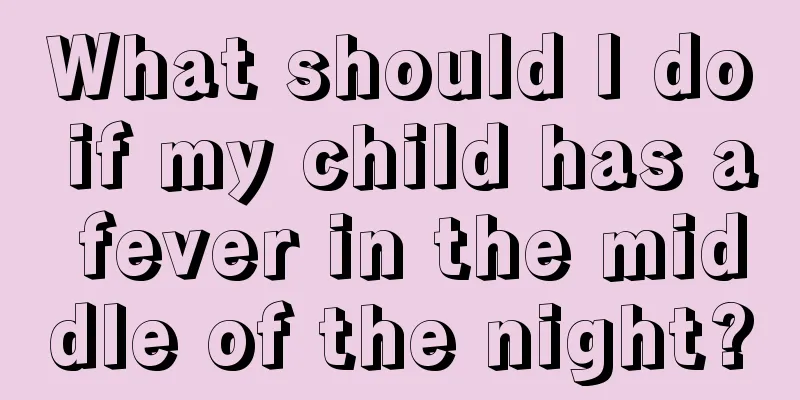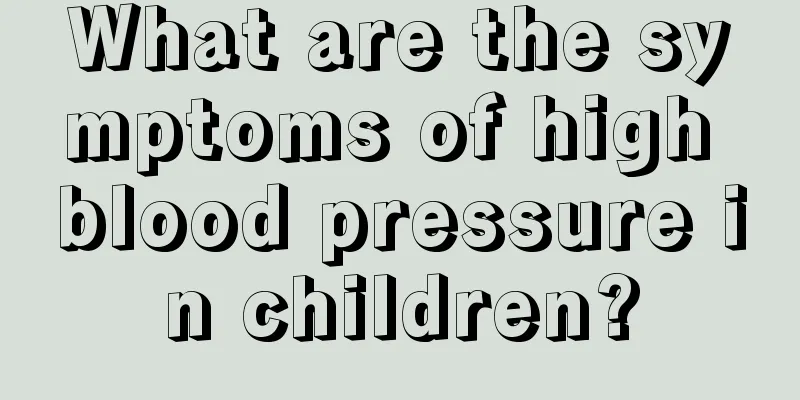Why is there redness around the baby's eyes?

|
Children are vital to every family and can be said to be the treasures of the family. Many parents will panic when their children have some physical problems and do not know the reasons. Among them, redness around children's eyes is a common phenomenon. However, when encountering such symptoms, many parents always think that their children are getting angry or have not had enough rest. In fact, there are many reasons for this symptom. We must grasp the reasons and then prescribe the right medicine. Let's understand what is going on with the redness around baby's eyes. Why is there redness around the baby's eyes? Infant eczema is a common skin disease in infancy. It is an allergic disease, and the exact cause is sometimes difficult to find. Infant eczema is usually called "milk ringworm". If drugs used to treat "ringworm" are used to treat infant eczema, the condition will worsen. Infant eczema is first seen in infants aged 2-3 months, mostly occurring on the cheeks, forehead, between the eyebrows and head. In severe cases, it may also occur on the trunk and limbs. In the early stage, it is erythema, and later it develops into small dot-like papules and blisters, which are very itchy. The blisters are broken, exudate flows out, and scabs are formed after drying. The lesions are often distributed symmetrically. Eczema is sometimes a dry type, with a small amount of grayish-white bran-like scaling on the small papules. It can also be seborrheic type, with light yellow oily liquid oozing out of small maculopapules and later forming scabs. It is more common on the top of the head, between the eyebrows, beside the nose, and behind the ears, but the itching is not too obvious. Prevention of baby eczema Prevention of baby eczema is important. Children's underwear should usually be made of soft and loose cotton or fine fabrics, not chemical fiber fabrics. Avoid wool fabrics and knitted clothes for both inner and outer clothing. It is best to wear cotton padded jackets, cotton-padded jackets, flannel shirts, etc. Pay close attention to the child's digestive status and whether he or she is allergic to foods such as milk, eggs, fish, and shrimp. Breastfeeding mothers should avoid eating such foods that are likely to cause allergies. Children should avoid irritation from alkaline soaps, cosmetics or perfumes. Do not receive BCG or other preventive vaccinations during the illness period. Avoid contact with patients with herpes simplex (commonly known as "fever sores") to prevent the development of herpetic eczema. After getting baby eczema, the following treatment measures should be taken: 1. The general treatment principle is: find out the cause, treat the symptoms, feed reasonably, and provide careful care. Generally speaking, we should first observe whether there is food allergy, especially allergy to animal protein such as milk, breast milk or egg white; secondly, the mother can eat fish, shrimp, crab, chicken, etc., which can also be passed to the baby through breast milk. After eating these animal foods, we should observe whether the baby's skin disease worsens. If it is related to the above situation, the baby should change the feeding method; if it is allergic to breast milk, use milk instead, if it is allergic to milk, use breast milk instead, or the mother should not eat fish, shrimp, crab and other foods during breastfeeding. At the same time, the baby's indigestion, constipation and diarrhea should be treated in time. 2. Commonly used internal medications include diphenhydramine syrup, vitamin B complex, vitamin C, etc. Antibiotics should be added when secondary infection occurs. 3. The topical medication should be determined according to the condition of skin lesions. When there is water exudation, erosion, redness or swelling, apply wet compress with 2% boric acid aqueous solution or 0.1 reflavonoid aqueous solution. After the exudation and erosion disappear, apply topical corticosteroid preparations, such as eczema cream, dehumidifying oil, skin relaxing cream, etc. The above is an introduction to why the red area around the baby's eyes is red. After understanding it, when you encounter such symptoms, do not let your child always rub his eyes with his hands. You must understand the cause and take your child to the hospital for examination in time. In addition, you must ensure that your child gets enough sleep and eats more vegetables and fruits. |
<<: What causes a newborn to cough?
>>: What to do if your baby coughs in March
Recommend
What to do if your child has dry lips
We all know that children's dry lips may be c...
If your baby's head is red and swollen, parents should take good care of it.
The genitals of male babies also need care, and a...
Why does a nine-year-old girl have discharge?
Generally speaking, both boys and girls enter pub...
What to do if children have ingrown eyelashes
Inverted eyelashes are a relatively common phenom...
Why do children have poor immunity and are prone to illness?
It is well known that babies do not have as stron...
How to give injections to children
No one likes injections, but they are an inevitab...
What should I do if a little girl has frequent and painful urination?
Frequent and painful urination is a very common p...
What are the causes of bad breath in children?
I am a kindergarten teacher. Recently I found tha...
How to make baby meat pie
Since the digestive ability of the baby's sto...
The dangers of bright children's food, parents should be careful when buying for their children
Food safety is not only important for adults, but...
What is the diet for constipated babies?
Constipation is a common disease in our lives. It...
Four-year-old baby with allergic cough
Every parent hopes that their baby is healthy, bu...
What to do if a four-year-old baby has a fever of 39 degrees
When a baby has a fever, many parents are sometim...
How to treat children's sore throat and recurrent fever?
Due to seasonal changes or excessive heat in the ...
The white of the child's eyeball turns yellow, mainly because of it
In life, children may have yellow sclera of their...









